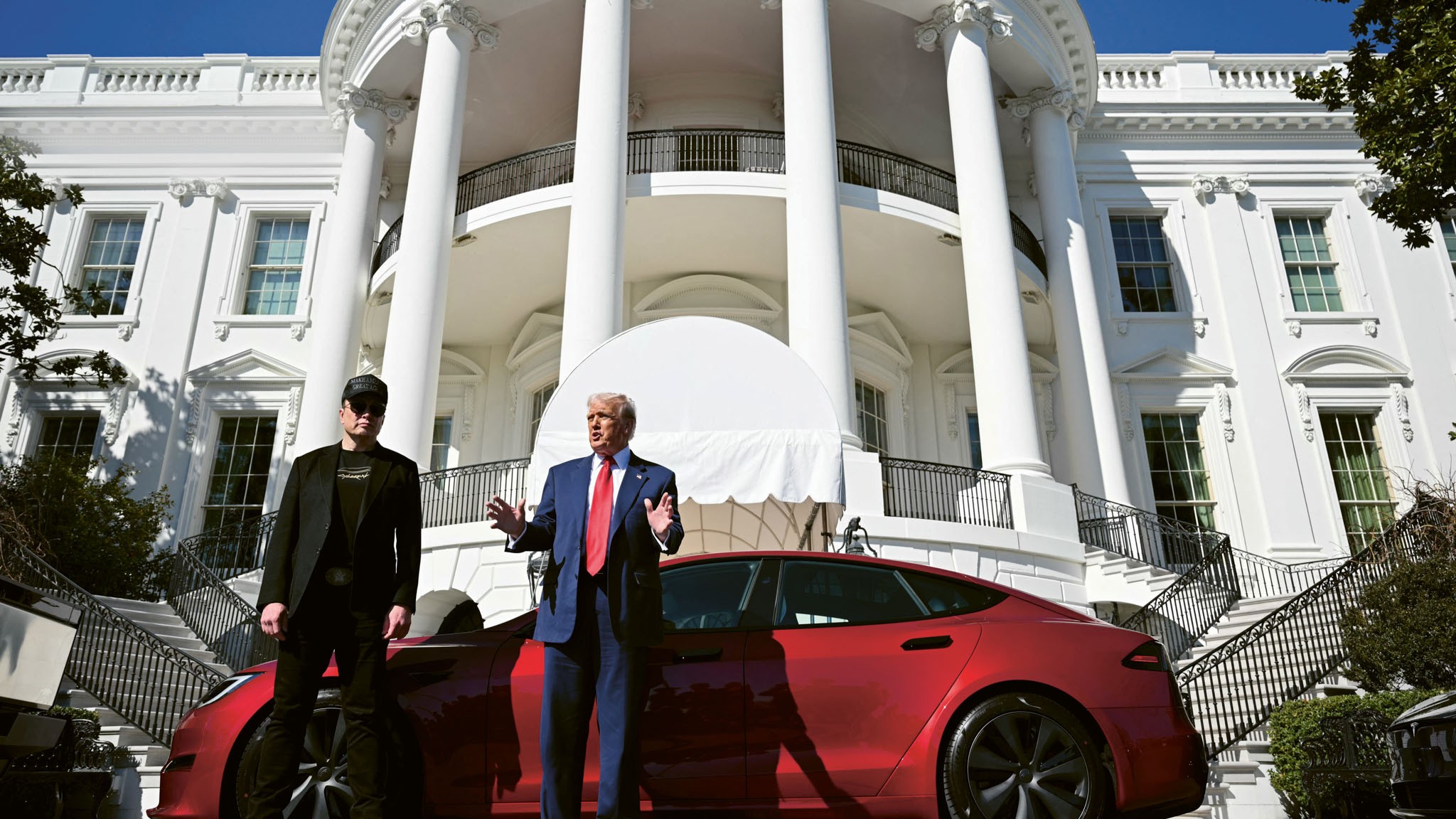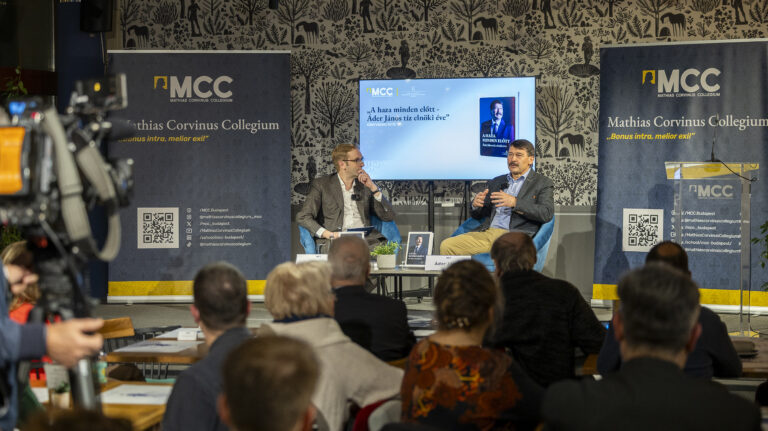This article was originally published in Vol. 5 No. 2 of our print edition.
In Europe, the period between the 1810s and the 1830s was a time rich in contradictions. On the cusp of a generational victory against archrival Napoleon and his French Empire, and with overwhelming tech and naval superiority after the Industrial Revolution altered the domestic manufacturing, railway, telegraph, and steamship sectors, the British nobility faced internal dissent from tech-restrictionists. Meanwhile, in Europe, ethno-national movements had begun to spring up all across the old empires. Lord Byron’s first speech in Parliament was in favour of the ‘Luddites’, a small group of nineteenth-century English textile workers who opposed automated machinery and resorted to violence and terrorism to stop modernization and progress: ‘Although the adoption of the enlarged machinery, in that state of our commerce which the country once boasted, might have been beneficial to the master without being detrimental to the servant; yet, in the present situation of our manufactures, rotting in warehouses without a prospect of exportation, with the demand for work and workmen equally diminished, frames of this construction tend materially to aggravate the distresses and discontents of the disappointed sufferers.’ Byron lost the argument. A globe-spanning superpower needed an ever-increasing workforce and constant expansion of the frontiers; the mass and the momentum of each reinforced the other. Technological revolutions also required not just specialized talents or eccentric innovators— Britain, after all, had plenty of both—but also a disciplined and dedicated workforce. And finally, by its very design, multipolarity compelled great powers to either adapt to newer technology or perish. In the face of each century-spanning hegemonic challenge, there were several great powers which fell behind in the competition and often disappeared from the map. Britain did not disappear, and it adapted to the structural pressures. Byron’s side, however, lost the historical argument.
I have long been obsessed with rapid changes in order, as it is not something a historian gets to experience often, and we do not have the luxury of organizing natural experiments to test hypotheses in this regard. The following assumptions are, as such, self-explanatory: that we inhabit a system in which the central political conflict is between an older bureaucratic form of governance supported by one set of oligarchs, and a more nascent populist form of governance supported by another, newer set of tech-oligarchs. The second set appears to be winning, though it faces challenges not just from the former governing coalition but also from its own side, as well as the challenge of organizing post-democratic politics within a democratic system. Naturally, the key is to revisit an earlier era similar to ours: an international multipolar world order in which actors are more or less evenly matched; a new tech-industrial revolution that is changing domestic social contracts, as well as paving the path for an era of outward conquest, expansion, and frontier politics; and the inevitable questions regarding belonging, migration, labour, and nationhood.
‘Every industrial revolution—and we are in the midst of a new one led by the tech aristocracy—goes through motions that breed new speech and social contracts, that then leads to disorder and theological conflict’
The bruising ideological debates of that era hold lessons for the new US tech-right aristocracy, who are, purely in terms of financial power, structurally in a historically similar position to the feudal lords of earlier eras, and have handily scored a win in what might be called one of the most interesting and peaceful revolutions in history. But they are also unsure about what compromises they should seek and how they should wield their enormous power and influence in order to achieve not just excellence but also a stable social equilibrium. And finally, they are unfortunately in a position in which they have to conduct what is essentially a form of post-democratic politics, within a democratic system that is still in place, together with all the public opinion and passions that come with it. The tech-right’s financial power and informational hegemony, and the push towards a race-neutral and quasi-imperial American meritocratic coalition, led to one of the biggest multi-ethnic right-wing victories in US history. And yet, as always, after the revolution comes the war, and the current war is pitting the tech-right against the restrictionists of their own side, while at the same time confronting it with the pain of coalition and state-building. It is a challenge faced by every generation of post-revolution stakeholders, who eventually have to stare down the extremists in their own camps and figure out a route towards societal equilibrium.
But there is another theoretical explanation for this inevitability. This intra-coalition rift after a revolutionary moment happens for a reason. Any grand coalition is notionally expansive, aiming simultaneously towards both compromise and greatness. Any such coalition also contains within itself extremes who want neither of those things, and are usually on a puritanical spiral, opposed to everyone else, including members of their own coalition. This creates an ideological conflict, and given that any extremism is by definition prejudicial towards the many, and opposed to the interest of the financial lords, they often tend to lose the ideological battle to the forces balancing against them. The tech-right is realizing that this ideological battle is now urgent1 and visible after a radical reordering of society, and is already upon them: in this case, the massive multiethnic coalition Trump victory now faces an intra-coalition conflict and challenge from within. For what it is worth, Trump seems to understand the need to find a balance in this regard.2 This is an attempt to narrate what the tech-right might need to learn from history. Academic neutrality necessitates that we attempt to chart the competing positions as dispassionately and objectively as possible.
The proximate cause of the current war between the tech-right and the neo-luddites is H1-B visas, which mostly go to Indians, and are unquestionably one of the most exploitative and corrupt of visa categories worldwide.3 There is no denying that hundreds of thousands of H1-B visas are obtained as part of a gamed system by visa mining firms, with the result that wages and competition are depressed in sectors with jobs that can be easily done by Americans.4 There is also a reasonable argument to be made that these visas do nothing to elevate the host country or culture. The rapid influx of a large number of managerial elite personnel from an alien culture coming to the shores of the United States through H1-Bs may make for a compliant and disciplined workforce, but they are essentially mediocrities, and the argument goes that they, like a swarm of locusts, will have no loyalty to the land beneath their feet and no intention to assimilate to the point where they forego their older identity as is necessary to be integrated as Homo Americanus.5
It also does not help that most twenty-first-century immigrants have made no effort to assimilate into American culture and have instead self-ghettoized themselves in their own cultural and linguistic cocoons. While the migrants of earlier eras came to make their new country their home and shape themselves in the dominant culture, current migrants often have no loyalty towards their new home. Social media and identity politics have also affected this. Hundreds of thousands of nationalist Twitter accounts constantly remind their diasporas across the world that their birth identity comes foremost, which is counterproductive and sets an expectation of dual loyalty, meaning that this group will always consider the interests of their place of birth over their place of settlement. It also goes against the foundational concept of America, where responsibility for assimilation and national consolidation was more or less always placed on the incoming group, as previous major groups of Germans, Italians, Irish, and Jewish migration demonstrated. There has been no such nationwide effort among most newer immigrants, who desperately cling to their roots. Many instances of balkanized ethnic withdrawal, whether among Somalian migrants in Minnesota or H1-B scams in California conducted by visa mining firms, stem from the same root cause. Congressman Ro Khanna is therefore correct in stating that H1-Bs are exploitative due to corrupt IT and visa outsourcing firms.6 But more Indian Americans need to look at the corruption, nepotism, and lack of assimilation that happen on their own side. No one should seek to emulate the example of Canada.7
The real crux of this hyper-animated debate, however, lies elsewhere. At its core, there are competing visions of a new America: one is espoused by the new tech aristocracy, and another by the MAGA, paleo-right and ethno-nationalists who are aligned with them in the winning coalition. At the risk of simplification, the tech aristocracy argue8 that if the US is supposed to be a globe-spanning, frontier expanding, planet conquering hegemon driven by unparalleled technological revolutions, then it requires, like all empires that came before it, people; not just eccentric innovators, but those who are disciplined enough to slog tirelessly from nine to six every day. That world-conquering vision, ostensibly proposed by the tech titans, stands at odds with the local variant of ‘little Englanders’, who simply want ethno-centric traditions über alles. Yes, H1-B visas are a corrupt scam,9 but to this group, the current anti-H1-B social media storms are not just about jobs or competence, or even cultural compatibility. It is, perhaps, about a far baser instinct. It is ironic that Elon Musk is now relearning the value of at least some form of gatekeeping, after opening the floodgates himself in what may have been a form of misguided idealism. One does not wish to provide every single sordid example on social media, but many will have observed some among the thousands of tweets on Asian sanitary habits or dysgenic features, or even the new vice president’s ‘betrayal of his people’ through ‘miscegenation’.

There is a motte-and-bailey argument from both sides of this debate. The proponents of expansive H1-Bs argue that the visa is needed solely for high-IQ and high-skill immigrants, when it is evident that H1-Bs are actually used mostly for managerial, low-skill jobs. Likewise, the opponents of H1-Bs argue that they are concerned purely about jobs for their countrymen, and it has nothing to do with ethnocentrism, but their social media betrays their real motivation. From Nikola Tesla to Steve Jobs, Elon Musk to Abhijit Banerjee, Peter Thiel to Jay Bhattacharya, Harry Houdini to Hannah Arendt to Henry Kissinger, none of them needed H1-Bs. But America would be diminished in some form without their contribution. And while the coalition agrees on illegal immigration, the question of any legal migration is therefore a source of conflict, as some in the latter group not just want restriction but complete moratorium10 on any immigration.11 There will be no compromise that will satiate this group, nor do they have an answer as to what they might consider as any form of assimilation. For what it was worth, former Congressional candidate and Peter Thiel protégé Blake Masters had a good solution to this.12 Smart and controlled, extremely competent, high-class, and meritocratic immigration is good. Mediocre and rapid mass migration, whether legal or illegal, that reorders the cultural modal point of a society while also putting pressure on the economy long term, is bad. Arguing anything else is ahistorical and imprudent. It is unclear, however, that one, his side agrees to that compromise, and two, his side will consider any number of immigrants ever to be assimilated enough, regardless of their efforts.
What, then, is to be done? Integration and assimilation are not, of course, just a one-way street of the host culture, but are active efforts from those who are new to the US, like the examples of the previous waves before them, German, Irish, Italians, and Jewish. The extreme restrictionists will always lurk in the corners as they have in every empire and every epoch, from the Central European ethno-nationalist revolutions of the 1840s in Europe, to the post-colonial pogroms in Africa and Arabia, to the Balkans and Eastern Europeans after the collapse of the Soviet empire, and during the modern period of US hegemony. But given that the US is itself an expansionist empire in all but name, with a still existing republican mode of governance, unless there is some form of forced assimilation to that idea of republicanism and to traditional Anglo cultural parameters, including a sense of fair play, there is a risk of balkanization and intra-ethnic violence. Successful empires throughout history have tended to be minimalist in terms of central administration, with the sovereign there to maintain order and intra-ethnic peace. Republics, on the other hand, which have democratic means embedded as governing principles, have to follow the messy politics and demands of various groups, which creates their own public passions and demands for forced assimilation—something the tech oligarchs perhaps did not consider when they decided to dive into politics.
In Byron’s time and after, during its imperialist peak, Europe was borderless,13 but most migrants were upper class and intelligent, as well as willing to assimilate to the host culture. European empires trained the best to run the world, and they were trained in European capitals. But there were no large-scale working-class resettlements. In turn, they provided order and jobs across the world with competent governance, so nor was there any need for massive working-class resettlements. It is a balanced model that has worked for centuries. The idea that ‘all migration’ is good, even on an unsustainably large scale, stems from the idealistic notion that everyone is equal in their contribution to the society that takes them in, and all possess the same merit and temperament required for the system of governing in place.
‘The real lesson…is for the new tech-right aristocracy to figure out how they want to wield their power to achieve that equilibrium’
The debate is, firstly, whether a globe-spanning hegemonic power in competition with other rival great powers is the correct and natural order of affairs for the right. And, secondly, whether technological advancements will inevitably lead to such a hegemony and competition with other powers worldwide, thereby requiring a curbing of public passions and, in turn, checks on democracy. Put simply, will the US keep expanding its frontiers and finding ways to adapt, or will it shrink and consolidate? It is unlikely to be able to do both. And only time will tell, though the tech-right is relearning the wisdom of Plato’s warnings about unchecked and often destructive public passions, which they often stoked during their revolutionary phase. Byron’s first speech in Parliament was in support of the Luddites and against the Industrial Revolution. He also opposed Castlereagh and Metternich, great power competition, colonialism, and the balance of power and equilibrium in Europe, and died supporting the Greek revolution against the Ottomans. All this stemmed from the same worldview, a strange mix of ethno-nationalism and tech-restrictionism. And that worldview lost, as technology and progress led to its own momentum of imperial British expansion and power.
It would indeed be an irony if all the technological and economic advances end up returning us to nineteenth-century imperial politics. But the lesson from ethno-puritanism is one of numbers, and it is often under-discussed. A conflict between competing visions is, as noted, inevitable. If one considers the US to be an expansionist, frontier-conquering hegemon in all but name, determined to conquer the galaxy, and if one also considers that the massive financial disparity necessitates some sort of renewed social arrangement in which the tech lords are the new aristocracy, then a new social compact is clearly needed. Consider that of the five great powers immediately prior to the Second World War, the obsession with purity within two, Germany and Japan, turned to an alienation of all, and they were, in turn, subdued by those who allowed a positive unifying story. And purely due to numbers, they were in turn defeated and occupied by three multiethnic empires, the British, the Soviets, and the Americans. One can disregard the question of the morality of their position; for a realist, the morality of an endeavour is irrelevant. However, from a purely strategic perspective, if a group ends up in a revolutionary purity spiral, the result is that others balance against them.
A lesson from those who lost the last great power competition is that they lost not just because their ideology was immoral per se, but because they were simply not smart enough to possess and perpetuate the multiethnic and meritocratic empire needed for the aforementioned hegemony. Both beatification and demonization of H1-Bs are, therefore, beside the point, because neither addresses the core question of what an American future might look like. That is an ongoing debate. The US does not need H1-Bs to be a great power, nor should it be required to accept hundreds of thousands of foreign mediocrities to do middle-class jobs, gamed by a corrupt system where a handful of outsourcing companies peddle the gift of American residence. But simultaneously, unless the US retrenches rapidly and gives up on its hegemony, there will always be a need for a core group of people who will do the homework and subserviently run the daily functions of the country. It will also need both some limited, high-skill immigration as well as forced assimilation. And like every aristocracy, the ascendant tech-right needs to figure out that balance, as well as a social compact with their fellow countrymen, who are not yet subjects.
Every industrial revolution—and we are in the midst of a new one led by the tech aristocracy—goes through motions that breed new speech and social contracts, that then lead to disorder and theological conflict. That in turn leads to a reactionary backlash against those committing disorder, from those who have the real financial and informational power, and ultimately, it leads to a new social compact and a new united elite formation with some negative equilibrium leading to peace and newer innovation and a satiated populace. The real lesson from this debate is for the new tech-right aristocracy to figure out how they want to wield their power to achieve that equilibrium.
NOTES
1 Matthew Mpoke Bigg, ‘Elon Musk Is an “Evil Person,” Steve Bannon Says’, The New York Times (13 January 2025), www.nytimes.com/2025/01/13/us/politics/steve-bannon-elon-musk.html.
2 Jon Levine, ‘Trump Supports Immigration Visas Backed by Musk: “I have many H-1B visas on my properties”’, New York Post (28 December 2024), https://nypost.com/2024/12/28/us-news/donald-trump-backs-h-1b-visa-program-supported-by-elon-musk/.
3 Eric Fan, and Coulter Jones, ‘Insiders Tell How IT Giant Favored Indian H-1B Workers over US Employees’, Bloomberg (9 December 2024), www.bloomberg.com/graphics/2024-cognizant-h1b-visas-discriminates-us-workers/?embedded-checkout=true.
4 Ken Cuccinelli, ‘Policy Brief: The H-1B Visa Program Harms American Workers and Should Be Repealed’, Center for Renewing America (24 May 2022), https://americarenewing.com/issues/the-h-1b-visa-program-harms-american-workers-and-should-be-repealed/.
5 Theodore Roosevelt, from an address at the Sorbonne in Paris, France on 23 April 1910, entitled ‘Citizenship in a Republic’, www.presidency.ucsb.edu/documents/address-the-sorbonne-paris-france-citizenship-republic.
6 Ro Khanna, post on X on 28 December 2024, https://x.com/RoKhanna/status/1873004229864112624.
7 Stuart Anderson, ‘Indians Immigrate to Canada in Record Numbers’, Forbes (25 April 2024), www.forbes.com/sites/stuartanderson/2024/04/25/indians-immigrate-to-canada-in-record-numbers/.
8 Elon Musk, post on X on 27 December 2024, https://x.com/elonmusk/status/1872770566920519899.
9 Santi Ruiz, post on X on 26 December 2024, https://x.com/rSanti97/status/1872298880882417782.
10 Josh Hammer, ‘Immigration Moratorium Now!’, Newsweek (27 December 2024), www.newsweek.com/immigration-moratorium-now-opinion-2006412.
11 Jason Richwine, ‘Op-ed: It’s Time for an Immigration Moratorium’, Center for Immigration Studies (26 March 2024), https://cis.org/Richwine/Oped-Its-Time-Immigration-Moratorium.
12 Blake Masters, post on X on 24 December 2024, https://x.com/bgmasters/status/1871679010188718140.
13 Alan J. P. Taylor, English History, 1914–1945 (Oxford University Press, 1978).
Related articles:







